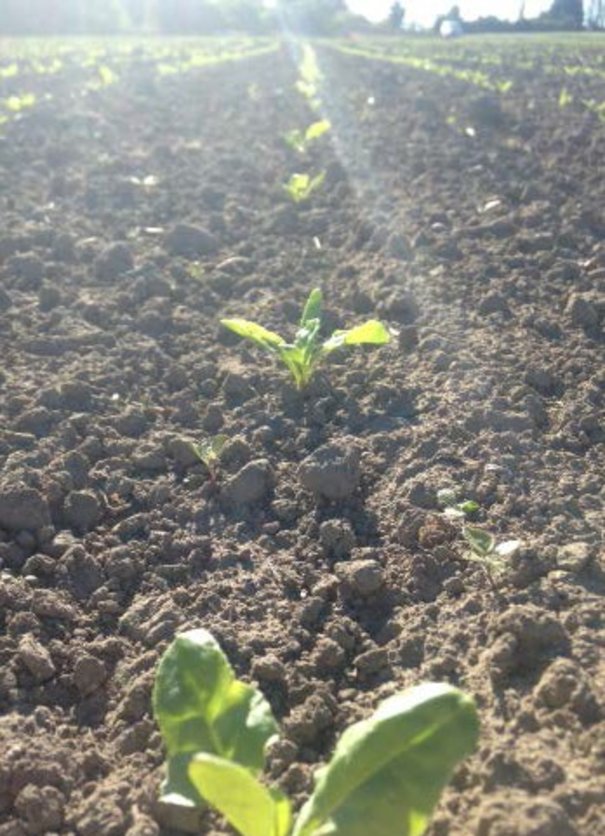Establishment techniques
- Fodder beet is a specialist crop which is more difficult and expensive to grow than other forage
- Fodder beet can produce high DM yields, but yields vary With good establishment techniques and management it can produce 30t DM/ha, with typical yields of 18- 24t DM/ha. In summer dry situations yields are lower.
Pre-sowing
Fodder beet is sown at a very low sowing rate compared to other forage crops, so a fine, even, weed free seedbed is essential for optimal germination. Fodder beet is particularly vulnerable to dry conditions and competition from weeds during establishment. You can reduce this risk using the ‘stale' seedbed technique i.e. prepare the seedbed 4-6 weeks before sowing.
To achieve a stale seedbed, spray out the selected paddock(s) with appropriate herbicide/s ideally 6 weeks before planting. This gives time to implement a double spray programme and retains soil moisture.
Paddocks are typically ploughed to bury existing plant material and break up any compaction or sub-soil pans, then surface cultivated to produce a fine, even seedbed. A second non residual weed spray (e.g. glyphosate) can then be applied just before sowing, or included in the pre-emergence application just after sowing.
Sowing date
This is location and season dependent, but in general October to late November is recommended, once soil temperatures are consistently above 10ºC. Sowing too early (< 10ºC) can result in uneven germination, making spray timings difficult. It can also risk vernalisation, causing plants to flower prematurely in late summer, known as 'bolting'. Later sowing may jeopardise germination rate (due to lack of soil moisture) and shortens the growing season, reducing yield potential.
Precision sowing
We recommend precision sowing fodder beet. This ensures seeds are planted with appropriate spacings, enabling each bulb to grow to its potential. Sow seed 15-20 mm deep, with rows typically 500 mm apart and 250 mm between plants in the rows (depending on sowing rate and planter row spacing). Drilling speed needs to be slow (5 kph) to ensure accurate seed placement. How the crop is to be fed should determine the planting layout.

Strip tillage is becoming popular for fodder beet, to reduce soil disturbance, weed germination and wind damage to establishing plants.
Fodder beet is normally sown at 80,000 seeds/ha for grazing, or 100,000 seeds/ha for lifting. This higher rate will restrict bulb size producing a more uniform crop which is easier to harvest.
Rolling the paddock immediately after drilling with a Cambridge roller helps maximise seed to soil contact giving a more even germination, and increasing the effectiveness of pre-emergence herbicide.
Weed/pest control
Seedlings are slow to establish so the crop is very susceptible to early weed competition and pest damage. A stale seedbed will get the crop off to a good start, however it alone rarely provides enough weed control.
The first herbicide is typically pre-emergence, applied immediately after sowing. An insecticide can also be incorporated. Follow this with selective post-emergence herbicides as needed until the crop canopy closes. Seek professional advice on herbicide choice, rates, timing and plantback withholding periods.
Fodder beet is very resistant to most brassica pests, except for Nysius, slugs and springtails which are typically found at drilling.
Bolters
A fodder beet crop usually has a small population of plants which flower prematurely (known as bolters). Remove these in January or February before they drop seed in the paddock. Left uncontrolled, they will each drop up to 1500 seeds which can survive in the soil for many years, and germinate as the soil is disturbed. These areas can become thick with weed beet in future years, depressing future crop yields. You can reduce bolters by not sowing fodder beet too early.


